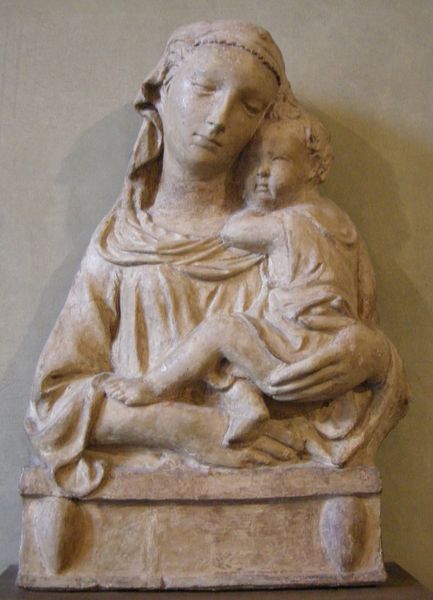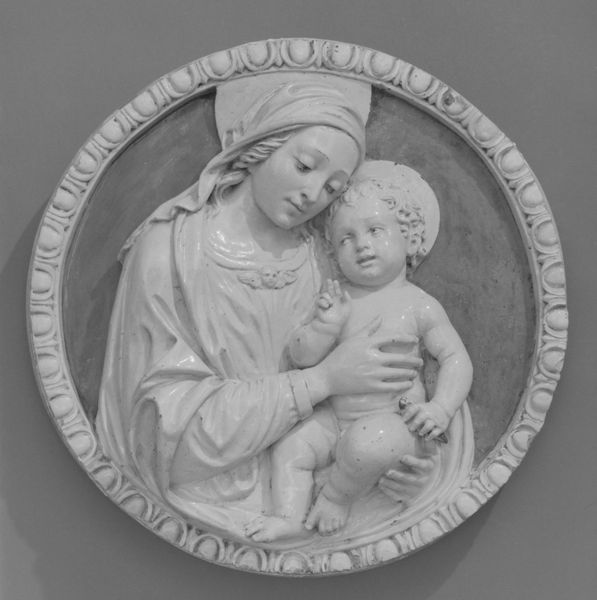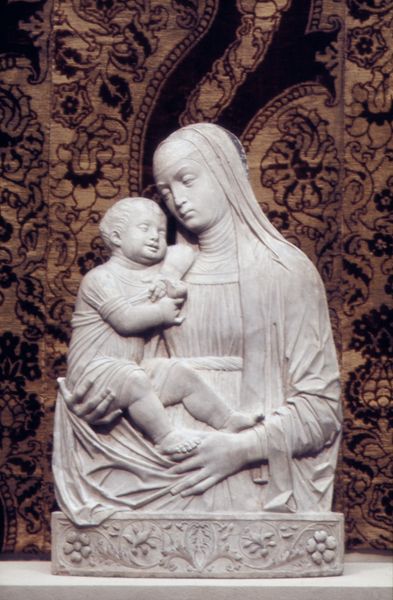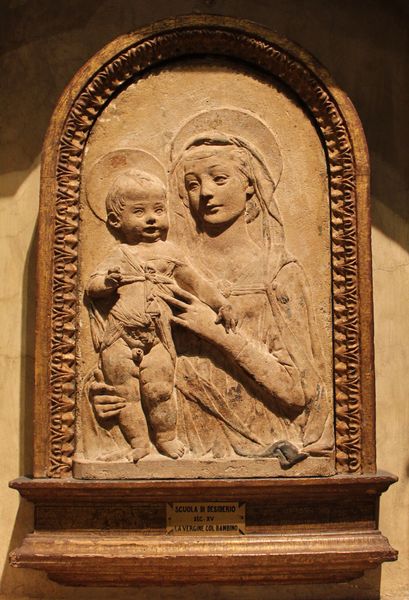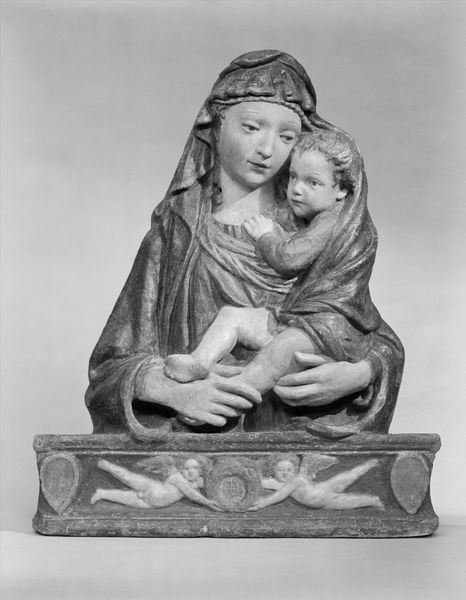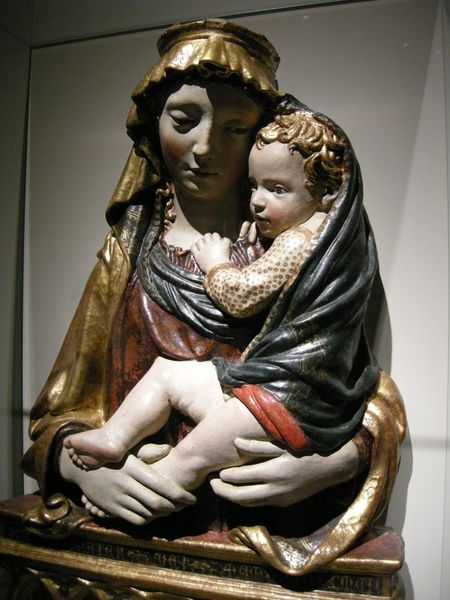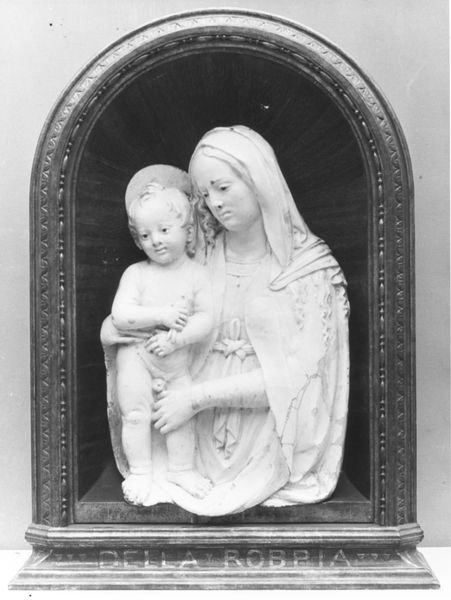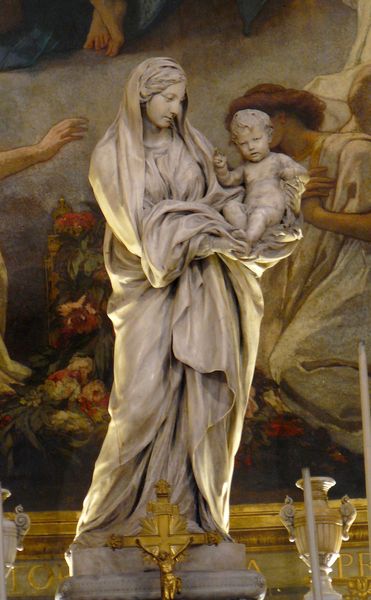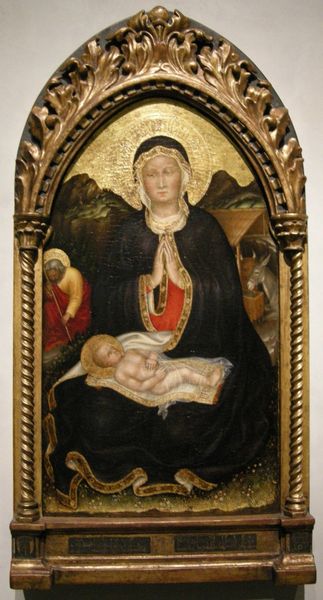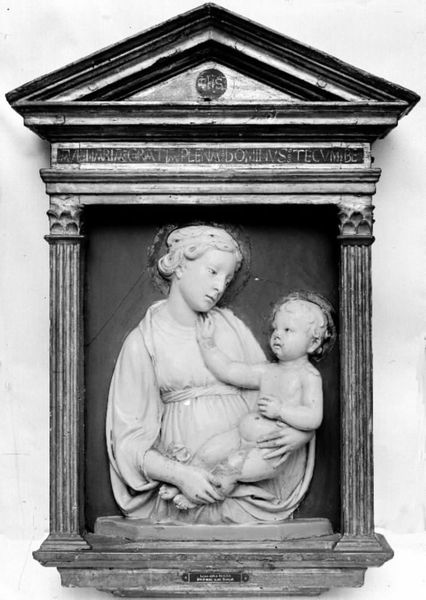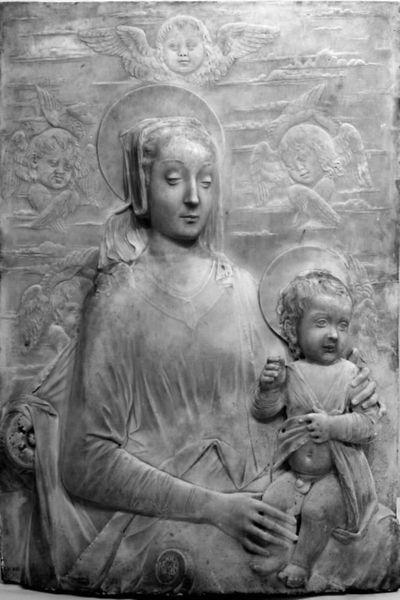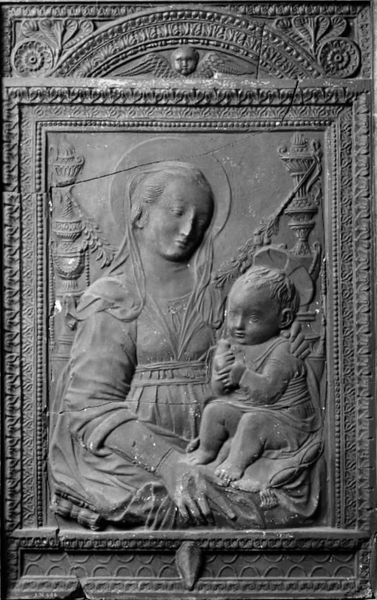
carving, sculpture, marble
#
portrait
#
statue
#
carving
#
sculpture
#
figuration
#
child
#
sculpture
#
christianity
#
marble
#
italian-renaissance
#
statue
Copyright: Public domain
Michelangelo sculpted this marble Madonna and Child sometime between 1503 and 1505, during the High Renaissance. Commissioned by a wealthy cloth merchant from Bruges, Belgium, for the Church of Our Lady, it’s the only sculpture by Michelangelo to leave Italy during his lifetime. In terms of social history, the piece represents the rise of merchant patronage, wherein affluent individuals, rather than solely the Church or aristocracy, commissioned art. The sculpture departs from traditional representations of the Madonna, which often depict her gazing adoringly at her son. Here, Mary looks down and away, perhaps foreshadowing Jesus's fate. This reflects a Renaissance interest in psychological realism. Bruges was a major commercial center, and the choice of Michelangelo, a Florentine artist, underscores the city's cosmopolitan character and the patron's desire for prestige. To further understand the sculpture's historical and cultural context, researchers might consult Renaissance art treatises, merchant family records, and church archives. Ultimately, our interpretation hinges on understanding the social and institutional conditions in which the work was produced.
Comments
No comments
Be the first to comment and join the conversation on the ultimate creative platform.
